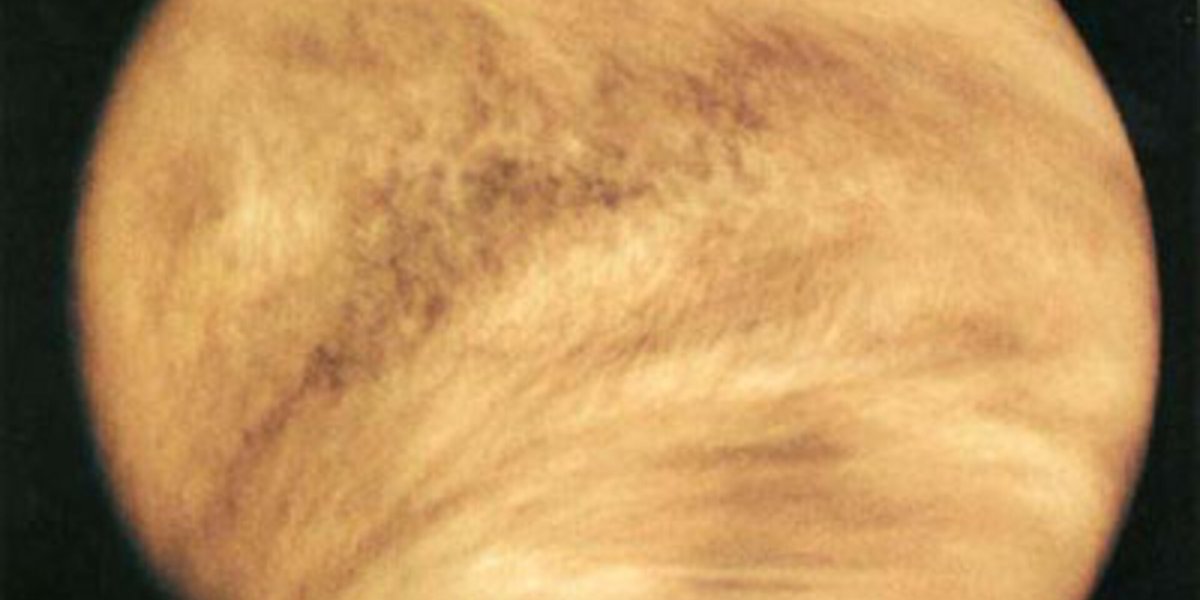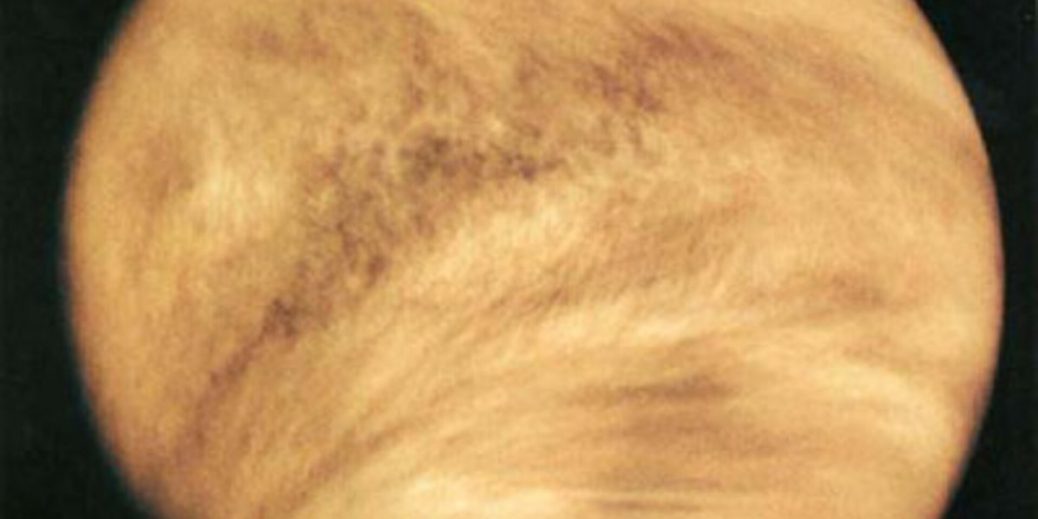
Airborne life on Venus would be unusual, but perhaps not as strange one might think. Just last month, inspired by the upcoming phosphine findings, MIT astronomer Sara Seager and some of the other coauthors of this new study published a paper about a possible life cycle on Venus that could sustain organisms in the Venusian clouds, emphasizing the fact that the clouds present more temperate and habitable conditions for life. She suggests that life on Venus could exist in droplets at high altitudes that evaporate and leave dried-up spores hanging in the atmosphere. Unlike Earth, Venus’s clouds are permanent—providing a more stable environment where these spores would dry out and fall to lower altitudes, rise back up in growing droplets in the cloud layer, and rehydrate to continue their life cycle. The goal, says Seager, was to help “plug a hole” in thinking about this environment.
The phosphine in Venus’s clouds was found by Jane Greaves, a planetary scientist with Cardiff University, and her team. They studied the planet using the James Clerk Maxwell Telescope (JCMT) in Hawaii, and the Atacama Large Millimeter/submillimeter Array (ALMA) in Chile. Both observe in submillimeter wavelengths that stretch from far infrared to microwave, which allows scientists to more closely characterize the chemical composition of the atmosphere.
The team found traces of phosphine at a concentration of about 20 parts billion. The data suggests the gas is present in regions closer to the equator and at altitudes of about 55 kilometers, where temperatures are relatively cool (about 30 °C) and the pressure is actually similar to Earth’s. “That suggests it’s part of the global circulation pattern of the atmosphere, where gas sinks before it travels as far as the poles,” says Greaves.
Phosphine is created from phosphorus with three hydrogen atoms. On Earth it is primarily produced naturally by life in oxygen-poor ecosystems, says Clara Sousa-Silva, a molecular astrophysicist at MIT and a coauthor of the new study. “We don’t know why life on Earth produces phosphine—just that it does,” she says. Anaerobic bacteria produce it in places such as sewage, swamps, marshlands, and rice fields, and in the intestines of most animals. It’s actually an extremely dangerous molecule for oxygen-breathing life.
In the absence of life you need exceptionally high temperatures and large amounts of energy to make phosphine (like the conditions found deep inside Jupiter’s atmosphere). On Earth it is also a product of human industrial activity.
The researchers have so far ruled out any known natural routes for phosphine production on Venus, including lightning, volcanism, or meteoritic delivery.
So where’s the phosphine coming from? Is it life? Greaves and her team have no clue yet. “All the theories are pretty challenging,” she says. It could be some kind of “exotic chemistry” not seen on Earth, or some hardy organisms capable of surviving very acidic environments on the surface and heating up available phosphorus (though that raises new questions about how phosphorus actually got there).
The team still doesn’t know if the gas actually originates at the “temperate” heights observed in the Venusian clouds, or whether it’s produced closer to the surface and then rises. And the study’s analysis uses models of phosphine behavior based on what we see on Earth; it could be radically different on another planet. “We are not claiming we found life on Venus,” Seager emphasizes.
On their own, the findings inspire more interest in Venus. But they present opportunities for scientists to understand possible biological activity on other worlds as well. “We now understand that Venus has everything to do with habitability,” says Kane. Though Venus is pretty inhospitable today, “Earth and Venus likely had very similar starting conditions, and recent work has shown that Venus may have been habitable, with surface liquid water oceans, as recently as a billion years ago,” he says.
Ultimately, the researchers want to find out more about how phosphine is distributed in the atmosphere, and see whether they can pinpoint a more local source. Other ground-based observations would be useful, but they’re still limited in what they can observe. “We hope our work will motivate future space missions that will go to Venus and directly measure the atmosphere,” says Seager.
Unfortunately, there are no new missions to Venus slated for the future. But NASA is currently debating two proposals—both orbiters that could help in this sort of investigation. The new findings could help support the case to move forward with either or both of them.







Recent Comments